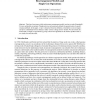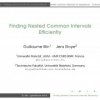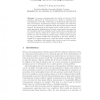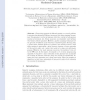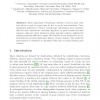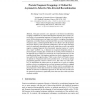94
Voted
RECOMB
2009
Springer
15 years 7 months ago
2009
Springer
Abstract. There have been many widely used genome rearrangement models, such as reversals, HannenhalliPevzner, and double-cut and join. Though each one can be precisely defined, t...
89
Voted
RECOMB
2009
Springer
15 years 7 months ago
2009
Springer
115
Voted
RECOMB
2009
Springer
15 years 7 months ago
2009
Springer
In genome rearrangements, the double cut and join (DCJ) operation, introduced by Yancopoulos et al., allows to represent most rearrangement events that could happen in multichromos...
105
click to vote
RECOMB
2009
Springer
15 years 7 months ago
2009
Springer
Comparing genomes of different species is a crucial problem in comparative genomics. Different measures have been proposed to compare two genomes: number of common intervals, num...
112
Voted
RECOMB
2009
Springer
15 years 7 months ago
2009
Springer
Abstract. Much important evolutionary activity occurs in gene clusters, where a copy of a gene may be free to evolve new functions. Computational methods to extract evolutionary in...
115
Voted
RECOMB
2009
Springer
15 years 7 months ago
2009
Springer
In 2006, a debate has risen on the question of the efficiency of bioinformatics methods to reconstruct mammalian ancestral genomes. Three years later, Gordon et al. (PLoS Genetics,...
108
click to vote
RECOMB
2009
Springer
15 years 7 months ago
2009
Springer
Abstract. Clusters of genes that have evolved by repeated segmental duplication present difficult challenges throughout genomic analysis, from sequence assembly to functional analy...
126
Voted
RECOMB
2009
Springer
15 years 7 months ago
2009
Springer
This paper presents a new approach to site-directed recombination, swapping combinations of selected discontiguous fragments from a source protein in place of corresponding fragmen...
74
Voted
RECOMB
2009
Springer
15 years 7 months ago
2009
Springer
86
Voted
RECOMB
2009
Springer
15 years 7 months ago
2009
Springer
